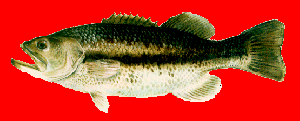Many countries such as the US and UK have existing legislation in place to cope with problems of containment and deliberate release of transgenic fish. In 1989 the UK set up a Royal Commission to report on the problem.
Very large numbers of species of nonnative fish have been introduced to new habitats by accident or intention. For example, those in the UK include rainbow trout, brook trout, common carp, crucian carp, bitterling, and etc. Part of the difficulty with fish GMOs is that they would be very similar to, but not identical with, fish of the same species which might already be native, for example Atlantic salmon.
One further question remain to be addressed, namely does the consumers want transgenic fish?
As far as the consumer is concerned, it is surely entirely a matter of reassurance and education, provided that 'all-fish constructs are employed'. Eating transgenic fish offers no additional hazard since the DNA and protein content of our food is digested. The only unfortunate anxiety is the confusion with the word hormone, and the widespread belief that extra hormone coding genes in the fish implies eating hormone. But, of course, all the relevant hormones such as growth hormone are non-steroidal and proteinaceous in nature, and so carry absolutely no additional hazard.
Related Articles:
http://www.millennium-debate.org/tel9aug.htm
